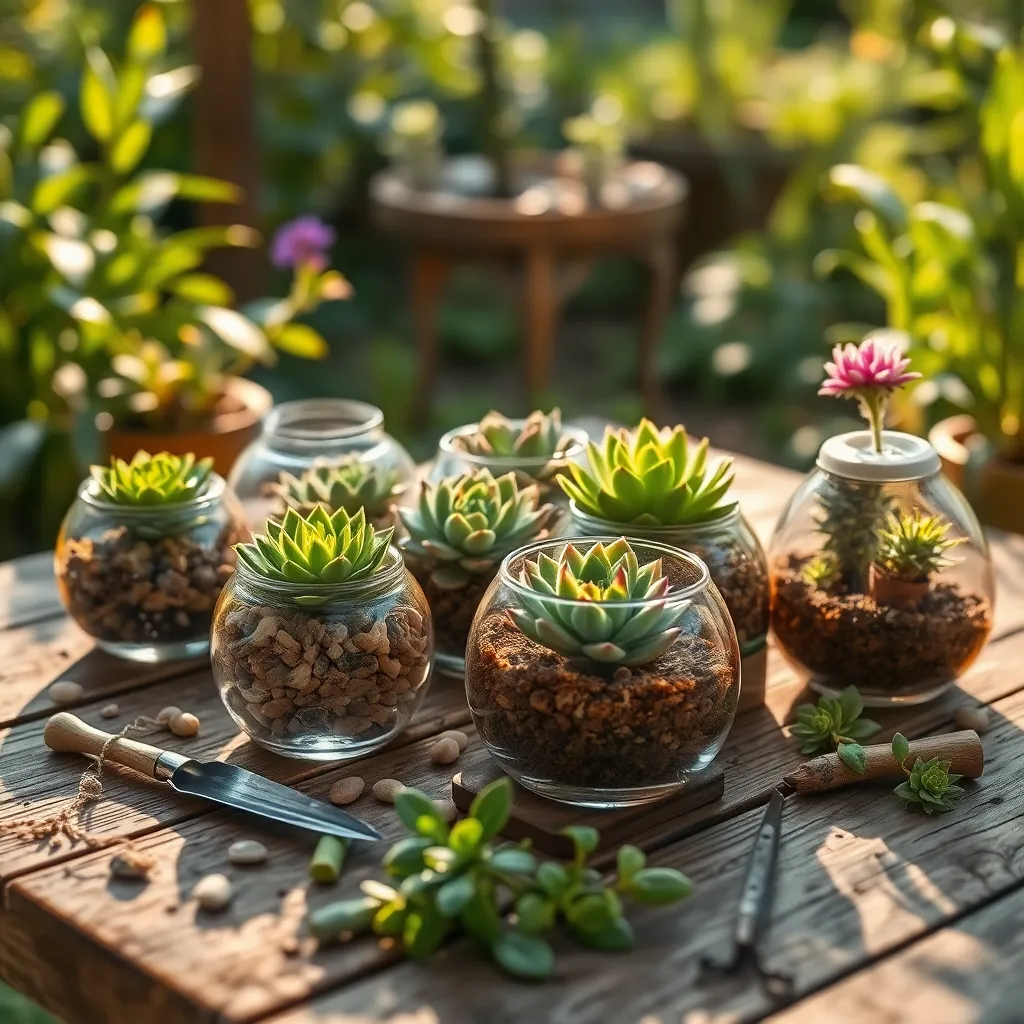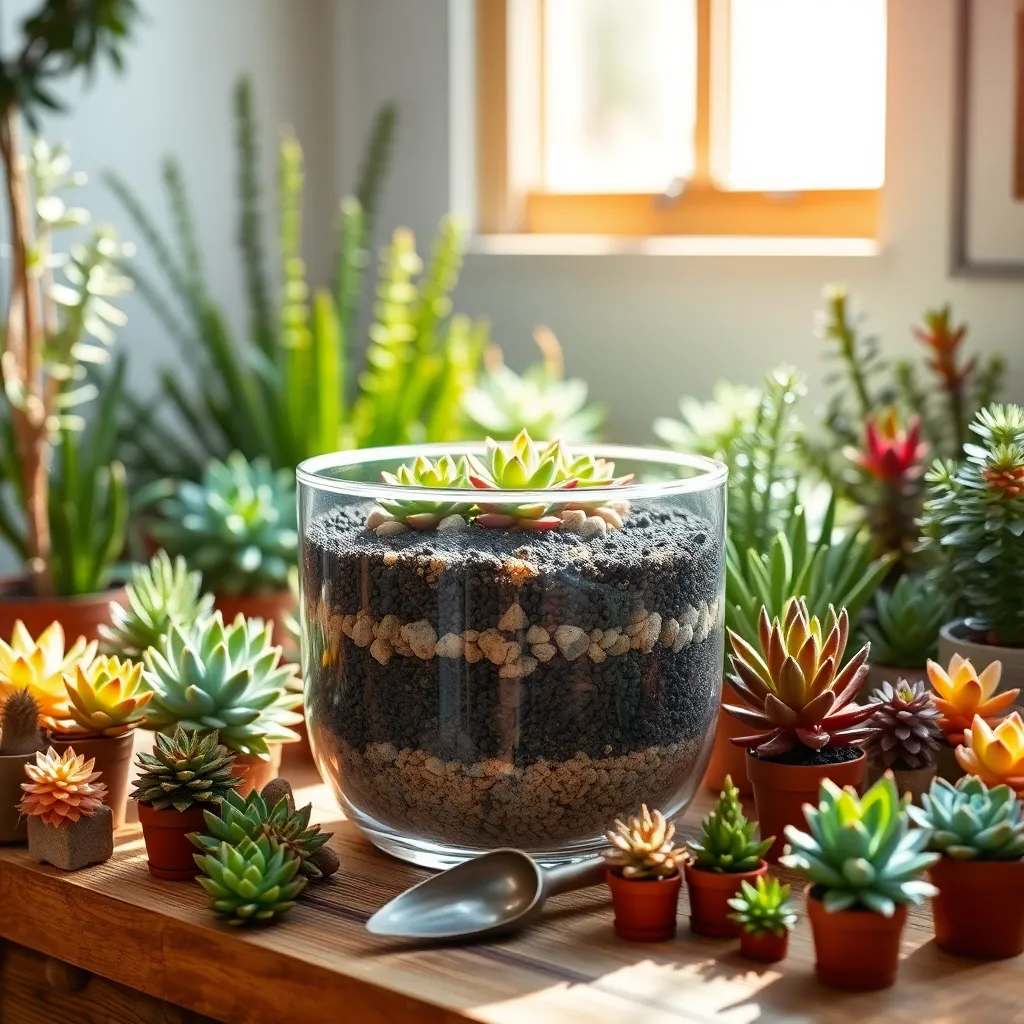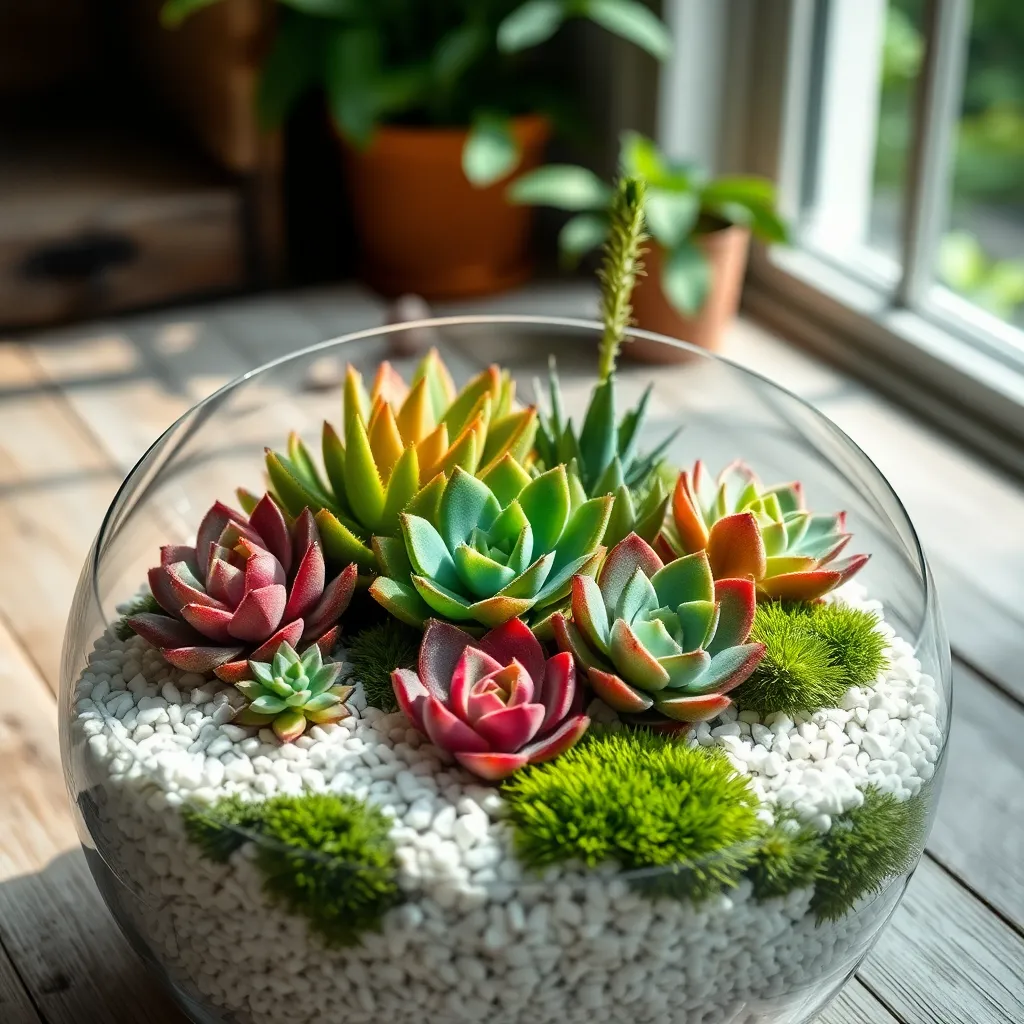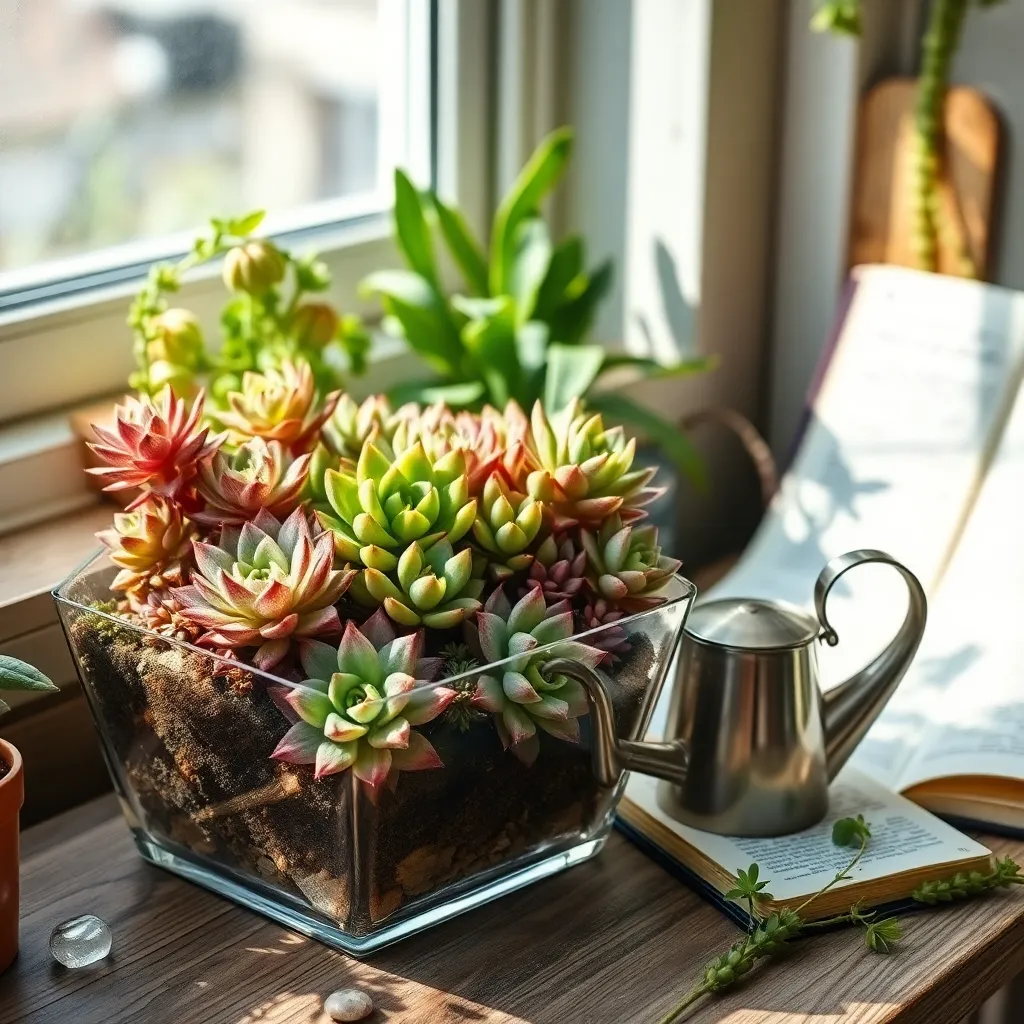Welcome to the enchanting world of terrariums, where creativity and nature unite to transform ordinary spaces into vibrant, living art. Whether you’re a seasoned gardener or just starting to explore the joys of nurturing plants, creating a succulent terrarium is a delightful project that brings the beauty of the outdoors inside, requiring minimal maintenance and offering endless possibilities for personalization.
In this article, we will guide you through the essential steps to craft your very own succulent terrarium, from selecting the perfect glass vessel to choosing the ideal soil and succulent varieties. Along the way, you’ll discover tips on designing your miniature landscape to reflect your style and learn how to care for your tiny ecosystem to keep it flourishing.
Creating a terrarium is not just about aesthetics; it’s about cultivating a relaxing hobby that brings tranquility and a sense of accomplishment. So, roll up your sleeves and prepare to dive into this rewarding gardening adventure that combines simplicity with elegance, promising to inspire both beginners and experienced plant enthusiasts alike.
Select the Perfect Container

When choosing a container for your succulent terrarium, consider both aesthetics and functionality. It’s essential to select a container that not only looks appealing but also provides adequate space for your succulents to thrive.
Glass containers are a popular choice as they allow for a clear view of your plants and help maintain moisture levels. However, ensure the container has an opening to allow airflow, preventing mold and rot.
If you prefer a closed container, opt for succulents that can tolerate higher humidity, like certain types of Haworthia. For beginners, an open container is the easiest way to avoid overwatering, which is a common mistake in succulent care.
Consider the size of the succulents when selecting your container; they should have enough room to grow without overcrowding. A depth of 2-3 inches is generally sufficient for most succulents, allowing their roots to spread comfortably.
For those looking to be more creative, consider adding layers of different colored pebbles or sand at the bottom of the container. This not only enhances the visual appeal but also provides necessary drainage, crucial for keeping succulents healthy and thriving.
Layer with Drainage Materials

Before creating the perfect environment for your succulents, it’s essential to start with a solid drainage layer. A well-thought-out drainage system helps prevent root rot, which is a common issue with succulents in terrariums. Begin by adding about an inch of small stones or pebbles to the bottom of your chosen container. This foundational layer allows excess water to drain away from the roots, maintaining the right moisture balance.
After placing the stones, consider adding a thin layer of activated charcoal. This layer serves as a filter to keep the terrarium fresh and free from odors, particularly useful in enclosed containers. Activated charcoal can be found in most garden centers or pet stores and is a crucial step for maintaining terrarium health. It also helps in reducing bacteria and fungi, ensuring your succulents thrive in a clean environment.
To further enhance drainage, consider using a mix specifically designed for succulents and cacti. These mixes often contain sand, perlite, or pumice, which improve aeration and drainage compared to regular potting soil. Fill the container with this soil mix until it’s nearly full, leaving space for planting the succulents. This step ensures that your plants have the right growing medium to support healthy root development.
For those looking to go the extra mile, you can layer in small amounts of horticultural grit or coarse sand. This additional layer can be especially beneficial in larger containers, offering even more drainage support. By incorporating these materials, you are mimicking the natural arid conditions that succulents thrive in. With this preparation, your terrarium is now ready to support the vibrant beauty of your succulents.
Add Suitable Potting Mix

Once your drainage layer is in place, it’s time to add a suitable potting mix for your succulents. Succulents thrive in a well-draining soil that mimics their natural habitat, so choosing the right mix is crucial for their health.
A cactus or succulent-specific potting mix is ideal because it contains the right balance of nutrients and drainage materials. These mixes often include components like sand, perlite, or pumice, which help prevent water retention that can lead to root rot.
If you prefer to make your own mix, combine regular potting soil with coarse sand and perlite in equal parts. This combination ensures that the soil remains porous and allows excess water to escape, keeping the roots healthy and aerated.
Advanced gardeners might consider adding a small amount of charcoal to the mix. Charcoal helps to filter impurities and keep the terrarium environment fresh, which can be particularly beneficial in closed terrariums.
When adding the potting mix, aim for a layer that’s deep enough to anchor your succulents securely. Generally, a depth of about two to three inches should suffice, allowing the roots ample space to spread and grow.
Arrange Succulents Thoughtfully

To create a visually appealing terrarium, consider the size and color of the succulents you choose. Select a variety of shapes and hues to add depth and interest, ensuring no single plant overshadows the others.
Begin by placing the tallest succulents towards the back or center of the terrarium, providing them with adequate space to grow. This arrangement not only ensures they receive enough light but also creates a pleasing backdrop for smaller plants.
Next, incorporate medium-sized succulents around the taller ones, blending the transition from tall to short plants. These succulents should be positioned slightly apart to allow airflow and prevent overcrowding, which can lead to rot.
At the forefront, position your smallest succulents or ground-cover varieties. This layering technique not only enhances the visual appeal but also ensures each plant receives the appropriate amount of light and space to thrive.
To add a touch of creativity, consider using decorative elements like miniature figurines or pebbles to fill gaps between plants. These accents can enhance the theme of your terrarium and add a personal touch to your creation.
For those looking to experiment, try grouping succulents with similar care requirements together to simplify maintenance. This approach makes watering and other care tasks more efficient, ensuring your terrarium remains healthy and vibrant.
Water Sparingly and Monitor

After arranging your succulents, it’s crucial to water them sparingly. Succulents are drought-tolerant plants that thrive on minimal moisture, so overwatering is a common mistake that can lead to root rot.
Begin by using a spray bottle to lightly mist the soil surface, ensuring you don’t soak the succulents. Wait for the soil to dry out completely before watering again, typically every two to three weeks depending on humidity and temperature.
Monitoring the moisture level in your terrarium is key to maintaining healthy succulents. You can use a moisture meter to check the soil’s dampness or simply stick your finger an inch into the soil to feel for dryness.
As you observe your terrarium, watch for signs of overwatering, such as mushy leaves or a foul odor. If you notice these signs, reduce watering frequency and ensure your terrarium has proper drainage layers to prevent water buildup.
For those looking to refine their technique, consider using a soil mix specifically designed for succulents and cacti. This type of soil provides excellent drainage, reducing the risk of water retention that can harm your plants.
Conclusion: Growing Success with These Plants
In exploring the art of creating a terrarium with succulents, we’ve uncovered five enriching relationship concepts: nurturing growth through patience, fostering communication by observing and responding to needs, building resilience by adapting to changing environments, appreciating individuality by celebrating unique traits, and enhancing harmony through balance and support. These principles not only guide you in crafting a thriving terrarium but also serve as a metaphor for cultivating meaningful relationships.
As an actionable next step, take a moment today to apply one of these concepts in your relationships—whether it’s listening more intently to a loved one or appreciating their unique qualities. This small step can initiate a ripple effect, strengthening your bonds over time.
Remember to save or bookmark this article, ensuring these insights are at your fingertips whenever you need a gentle reminder of how to nurture relationships, much like your flourishing terrarium. As you continue on this journey, envision a future where your relationships are as vibrant and resilient as the succulents you’ve lovingly tended. Here’s to growing together and creating lasting, nourishing connections.

